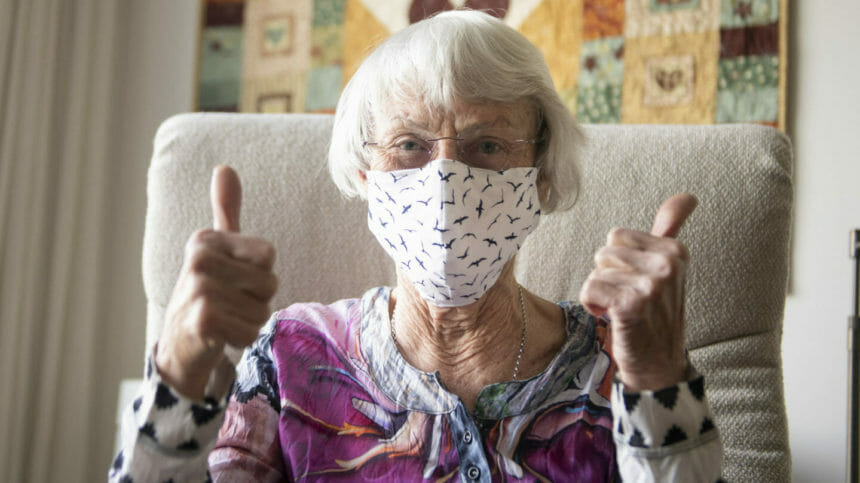
A downtick in nursing home COVID-19 infections may be linked to vaccinations, according to new research.
An analysis of 797 facilities from the American Health Care Association showed that nursing homes experienced a 48% decline in new resident cases three weeks after their first onsite vaccine clinic. This compared with a 21% decline among unvaccinated nursing homes located in the same county. And staff cases have also declined in vaccinated nursing homes — by 33% compared with 18% in non-vaccinated facilities.
This is the first study of the link between COVID-19 vaccines and infection transmission in long term care, AHCA said. And if the association is shown to be true, it’s a significant bright spot after a year’s worth of struggle to get facility outbreaks under control. What’s more, providers involved in the Pharmacy Partnership for Long-Term Care say they will wrap up second-dose clinics in a few weeks.
Fully 85% of participating nursing homes have completed their second round of vaccination clinics, and first doses are complete in three-fourths of assisted living communities and other senior living communities, according to AHCA and sister organization the National Center for Assisted Living. In addition, more than 10% of nursing homes have completed a third clinic — the final one to be delivered to facilities participating in Phase 1 of the program.
It’s unlikely, however, that all of long-term care will have completed their shots by March 1. That’s the goal set by AHCA / NCAL at the start of the vaccine rollout in December in the hopes of preventing thousands more deaths. Not all facilities were able to participate in the federal program, or have yet to be reached by a pharmacy. In addition, a sizable number of staff members are reticent about receiving a shot, and the vaccination process has not been a simple one.
“This is not mass vaccination, and there were some misconceptions going into it by the public that we would sweep through thousands of homes in a week,” Ruth Link-Gelles, Ph.D., MPH, of the Centers for Disease Control and Prevention, recently told Bloomberg. “It’s plodding along from room to room; it just takes time.”
States want more involvement, better facility data
Meanwhile, state governors are pushing for a bigger role in reaching yet-unvaccinated priority populations.
In a letter sent to the White House on Monday, a bipartisan group of state leaders called the current federal delivery strategy using several different vaccination programs “confusing.”
“[W]e believe that federal decisions to use pharmacies and federally qualified health centers should be coordinated with state governments,” the governors said in reference to the Biden administration’s recent decision to add these entities as additional vaccine providers. In some cases, vaccines will be delivered directly from federal stockpiles to these providers. Together with the Phase 1 federal partnership with chain retail pharmacies, this makes “three separate federal efforts beyond our control,” the governors wrote.
States have better local knowledge of each pharmacy provider’s capabilities for delivery, along with the needs of the communities they serve, they argued. “If the federal government distributes independently of the states to these same entities without state coordination and consultation, redundancy and inefficiency may very well follow.”
In related news:
The White House on Tuesday said that it will increase the weekly number of COVID-19 vaccines sent to the states by 13.5 million doses and double the amount sent to pharmacies to 2 million doses, according to Reuters. That’s a 57% increase since President Joe Biden’s Jan. 20 inauguration, the news outlet reported.




